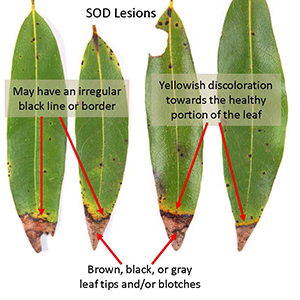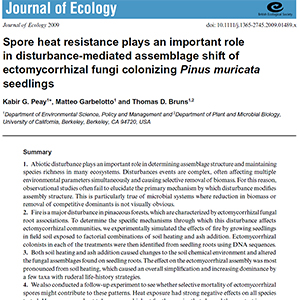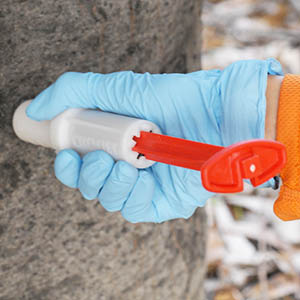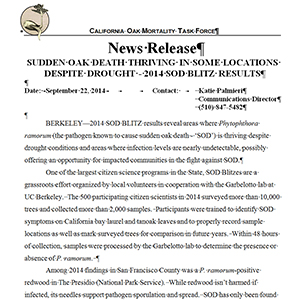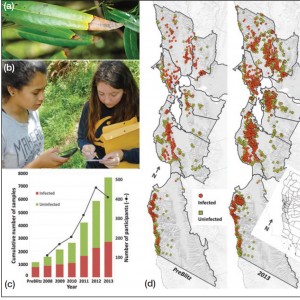When thinking about P. ramorum dispersal, it is important to think about spread at two scales. First, the pathogen establishes itself on transmissive host leaves (e.g. California bay laurel, tanoak, redwood, rhododendron, and camellia) by moving up to several hundred meters during conducive rain events. Then, as the pathogen builds up, infection can spread from a transmissive host to an oak if it is within 20 m from the oak. If incidence of transmissive hosts is low in your area, chances are that an oak will not become infected even if a camellia or pittospsorum is a few meters away from it, so there is no need to remove these hosts if there are few bay laurels or tanoaks in your neighborhood. The second thing to keep in mind is that SOD is not everywhere. You can use SODmap mobile to help determine current levels of risk for oak infection on your property. If risk is low or negligible, again, there is no need to remove these plants, but they should be monitored for symptoms. The last thing to keep in mind is that the maximum distance between a transmissive host and an oak depends on the size of the transmissive host and on how infectious it may be (i.e. how well does it sporulate). For both camellia and pittosposrum, if the distance between your oak and plants is 10 m or more, they probably represent a low risk. If they are 7 m or less, they may represent a risk if your neighborhood has plenty of transmissive hosts.
We have old camellias and a pittosporum on our property that are healthy, but growing very close to coast live oaks. Should they be removed to help protect the oaks from SOD?







